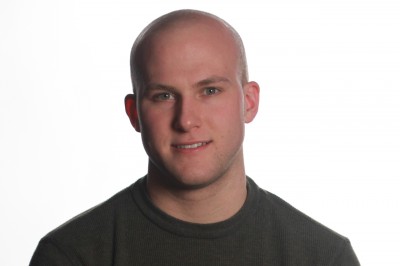
Hometown, Country:
Mount Airy, Maryland, USA
Academic history prior to coming to MIT:
BS in Physics from the University of Maryland. I previously did research at the Institute for Research in Electronics and Applied Physics (IREAP), where I worked on various projects including building electron beam sources for high power microwave experiments as well as assisting experiments studying direct electron acceleration, quantum molecular rotational wavepacket revivals, and laser plasma filaments. Before enrolling in college, I spent a year at the National Cancer Institute in Frederick, MD sequencing interesting genes across many cat species.
What brought you to MIT?
I had become interested in quantum mechanics towards the end of my undergraduate studies and happened to be particularly inspired by several beautiful results that had been published at the time. One came from the group of Ian Spielman at NIST and Maryland where his group showed that one could engineer synthetic magnetism in a gas of ultracold atoms. Another came from the group of Martin Zwierlein at MIT where they showed that a strongly interacting, but dilute gas of cold fermions, actually bounce off each other when the spins are collided together. Needless to say, I was inspired by the beautiful results and found myself consuming every Wikipedia article on cold atoms I could lay my hands on. MIT is one epicenter of cold atom science worldwide, so it was quite a natural fit!
What problem are you trying to solve with your current research and what are some possible applications?
One long-term goal of the field is to build a quantum computer, which has the potential to revolutionize the world as we know it. However in the short term, quantum simulators are the closest things we have to a working quantum device with many thousands to many millions of particles. There is a rich space of possibilities for quantum simulators to achieve nontrivial results that are generally incalculable on a classical device. My work is focused on two main areas: understanding the microscopic nature of magnetism, and exploring the interplay of strong interactions and topology with hope of realizing exotic and useful states of matter such as in the fractional quantum Hall effect. Both are computationally hard problems to solve and are particularly accessible to current quantum simulators.
What interests you most about your research?
Daily life in an ultracold atoms lab is exciting because our work straddles the line between the fundamental and the applied. At the same time we are trying to figure out how to implement very high-level physics goals, we are also trying to keep abreast of the latest technology useful for achieving these goals. The cold atoms lab is an awesome space where abstract theory and modern technology collide in a system small enough to fit on top of a table!
What are your future plans?
Predicting the future is a tricky business, but I think that one day ultracold gases will push beyond the paradigms of condensed matter physics due to the exquisite control we demonstrate in our systems and the vast range of different interactions and geometries that can be engineered. I hope to remain a part of the field and push the boundaries of how we can manipulate cold atoms and molecules in order to make this dream a reality.
